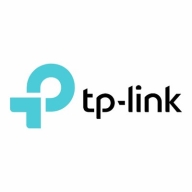

Omada Access Points and Aruba Instant On Access Points compete in providing high-quality Wi-Fi connectivity solutions for businesses. Omada Access Points have an advantage with competitive pricing and strong support, while Aruba Instant On Access Points are seen as premium products with superior features and reliability, justifying their higher cost for many buyers.
Features: Omada Access Points offer affordable central management, seamless Wi-Fi roaming, and scalability, supporting up to hundreds of devices. Aruba Instant On Access Points focus on high-speed performance, WPA3 security features, and mobile network management, appealing to tech-savvy environments.
Room for Improvement: Omada Access Points could enhance customer service efficiency and include more high-performance features and security protocols. Aruba Instant On Access Points might reduce upfront costs, expand advanced features, and improve scalability options for larger deployments.
Ease of Deployment and Customer Service: Omada Access Points offer straightforward deployment with cloud-based tools, ideal for budget-conscious businesses, though some customer service areas need improvement. Aruba Instant On Access Points provide a user-friendly deployment process with mobile apps for intuitive network management, supported by consistent customer service.
Pricing and ROI: Omada Access Points are more affordable, with lower setup costs, delivering considerable ROI for budget-limited settings like startups. Aruba Instant On Access Points have higher upfront costs but promise a solid ROI with their robust technology infrastructure, appealing to businesses needing high-performance and secure networks.
| Product | Market Share (%) |
|---|---|
| Aruba Instant On Access Points | 1.6% |
| Omada Access Points | 4.2% |
| Other | 94.2% |


| Company Size | Count |
|---|---|
| Small Business | 23 |
| Midsize Enterprise | 4 |
| Large Enterprise | 9 |
| Company Size | Count |
|---|---|
| Small Business | 10 |
| Midsize Enterprise | 2 |
| Large Enterprise | 4 |
Ingredients for success.
Fast 802.11ac Wave 2, secure employee and guest access, easy-to-use web, and mobile app management.
Say yes to secure Wi-Fi access.
Pre-built access control lists (ACLs) and built-in firewall in the access points prevent malicious traffic from entering your network – we call it “hassle-free” security.
Never drop an important call.
With Instant On, voice and video business applications are automatically prioritized, so you stay connected with your peers.
Omada access points provide a business-class wireless network solution that’s flexible, manageable, secure, and easy-to-deploy. The free EAP Controller software allows users to manage hundreds of EAPs at multiple sites, all from a single location. The ability to control, adjust and visualize the entire network from any connected PC makes centralized business Wi-Fi management more efficient than ever before. Omada EAPs also feature captive portal and advanced RF management functions, which make them ideal for demanding, high-traffic environments such as campuses, hotels, malls and offices.
We monitor all Wireless LAN reviews to prevent fraudulent reviews and keep review quality high. We do not post reviews by company employees or direct competitors. We validate each review for authenticity via cross-reference with LinkedIn, and personal follow-up with the reviewer when necessary.